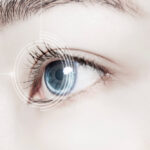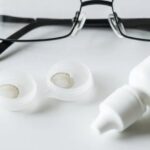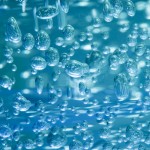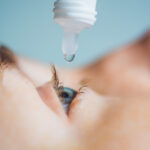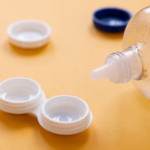Can You Use Contact Solution as Eye Drops? Learn the Risks and Facts

Contact solution as eye drops? Many people have been wondering if this is possible and if it is safe or harmful.
Can You Use Contact Solution as Eye Drops?
What a bold move and harmless substitution but it’s still a big no no! Your eyes can feel dry and itchy because of irritation from less moisture but contact solution is not the right option. Both solutions can be very similar but they are meant for different purposes entirely and are made up of separate ingredients for their individual functions. Substituting one for another purpose can be considered a misuse or abuse. This act can also lead to conditions like infections, eye discomfort, or, in the worst cases, long-term eye health issues.
Eye Drops and Their Types
These are liquid solutions that are designed to treat a series of eye conditions. They are capable of relieving the eyes from allergies, infections, dryness, and redness. There are different types of eye drops with certain functions and they are:
- Medicated Eye Drops: They are prescription and steroid eye drops that are used to treat eye diseases and infections. They require a prescription from an eye doctor.
- Rewetting Drops: These are specially created for people who wear contact lenses to keep the lenses hydrated, comfortable, and prevent eye irritation. It is also very safe for frequent use.
- Lubricating Eye Drops: This is also known as artificial tears and is so efficient in relieving dry eyes, which can be caused by age, sleeping pills, winding conditions, or beta blockers, while also keeping the tear film balanced through hydration.It is of two types: the preservative one and a preservative-free solution. The artificial tears with preservative solutions are meant to discourage the growth of bacteria after the bottle is opened, while the preservative-free solution is safe for people with sensitive eyes or those that apply eye drops up to four times a day.
- Antihistamine Eye Drops: They are potent in the reduction of eye irritation, swelling, and eye redness—most times, the results of allergies. Also referred to as ‘allergy eye drops,’ it can be used for the treatment of certain eye conditions.
They are mainly for providing moisture to the eyes. Their ingredients are different from those of the contact solution.
Contact Lens Solutions and Their Types
Contact lens solutions consist of several types and are meant for different purposes. These solutions are:
- Saline solution: This mixture contains a simple saltwater solution that is for rinsing the lenses. it is is incapable of disinfecting the contact lens because it is only meant for cleansing.
- Multipurpose Contact Lens Solution: It can do everything. From cleaning and disinfection to the storage of contact lenses. It is cheaper and readily available. Another name for it is “no rub,” i.e., you don’t need to rub the lenses after applying the solution. Also, when buying, check for the solution that is compatible with your lens type because they differ.
- Hydrogen Peroxide-Based Solution: It consists of hydrogen peroxide, which serves as disinfectant for the contact lenses. Neutralization before use is compulsory so it requires more time and attention. This solution is also preservative-free, perfect for people with allergy issues, and more expensive.
None of these solutions are meant to be applied directly to the eyes. Do not substitute them for your eye drops.
Reasons Why You Shouldn’t Use Contact Solution?
Some people believe these solutions are interchangeable but it is very incorrect and risky. Here are why you shouldn’t use contact solution as eye drops:
- Discomfort: The multipurpose contact solution contains preservatives in case of bacteria growth during storage. If used on the eyes, it can result in eye redness, an allergic reaction, and discomfort.
- Formulation Ingredients: They are meant to disinfect the contact lenses and remove debris. If used for the eye, they can irritate it and can be worse for people with sensitive eyes.
- Hydration Issues: The contact solution cannot provide moisture to the eyes, unlike the lubricating eye drops. Continuous usage of this solution on the eye can lead to dryness of the eyes and itching.
- Infections: expired or old contact solution can lead to bacteria growth. Keratitis, or conjunctivitis, which is also known as pink eye, can be developed if contact lenses that are soaked in the contact solution are worn on the eyes.
- Serious Damage: Applying a hydrogen peroxide-based solution to the eyes can lead to irritation, burning sensations, and damage to the cornea. It is too fatal to come in contact with the eyes.
Solutions to Eye Problems Caused by Contact Solution
If you experience any symptoms of eye problems after the use of contact lens solution instead of eye drops, you should try out the following:
- Remove the contact lens and don’t wear it until the irritation ceases.
- The use of preservative-free eye drops can help reduce the effect of allergic reactions on the eyes.
- Rinse your eyes with fresh water or the sterile saline solution.
- If you have tried everything above and the symptoms persist, it is time to visit the eye doctor for medical attention.
Tips for Healthy Eyes If You Wear Contacts Lenses
Wearing contact lenses also comes with its disadvantages. To maintain good eye health, here are the tips to keep in mind:
- Use fresh contact solutions for disinfection. Do not mix fresh solution with an old one.
- Never use contact solution as a substitute for eye drops.
- Do not mess with your eyes by using hydrogen peroxide-based solutions in your eyes directly.
- Opt for preservative-free ones if you have sensitive eyes. You can also ask your eye doctor for a prescription.
- Always remove it before swimming or showering.
- Regular checkups are crucial.
Conclusion
Using contact solution in place of eye drops can look harmless but the outcome can impact your daily life and activities. You might experience symptoms like infections, eye discomfort, and dry eyes. These contact solutions are to clean and store contact lenses, so they cannot provide the functions of eye drops, which are meant to relieve dry eyes or allergies.
These eye drops are mostly prescribed by an eye doctor who checks out your eye condition and recommends the appropriate eye drops that suit your needs. Either it is artificial tears or medicated eye drops, the goal is to choose the right one that can keep your eyes healthy and provide necessary relief without any risk.
Bibliography
https://www.aoa.org/?sso=y
https://www.aao.org/eye-health/glasses-contacts/contact-lens-cleaning-solution-basics
https://www.mayoclinic.org/diseases-conditions/dry-eyes/expert-answers/artificial-tears/faq-20058422
https://www.cdc.gov/contact-lenses/prevention/





